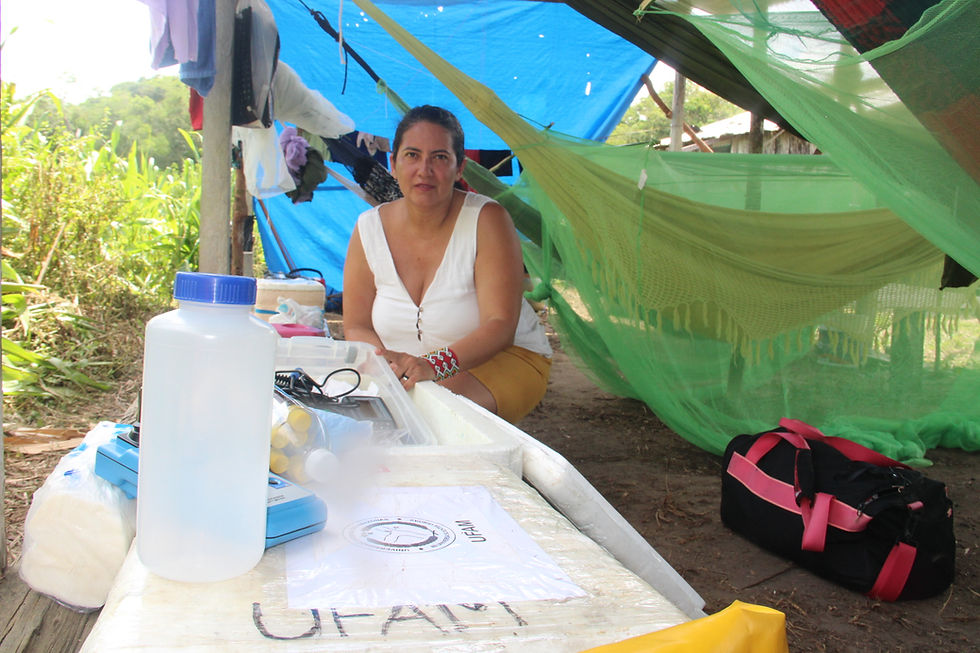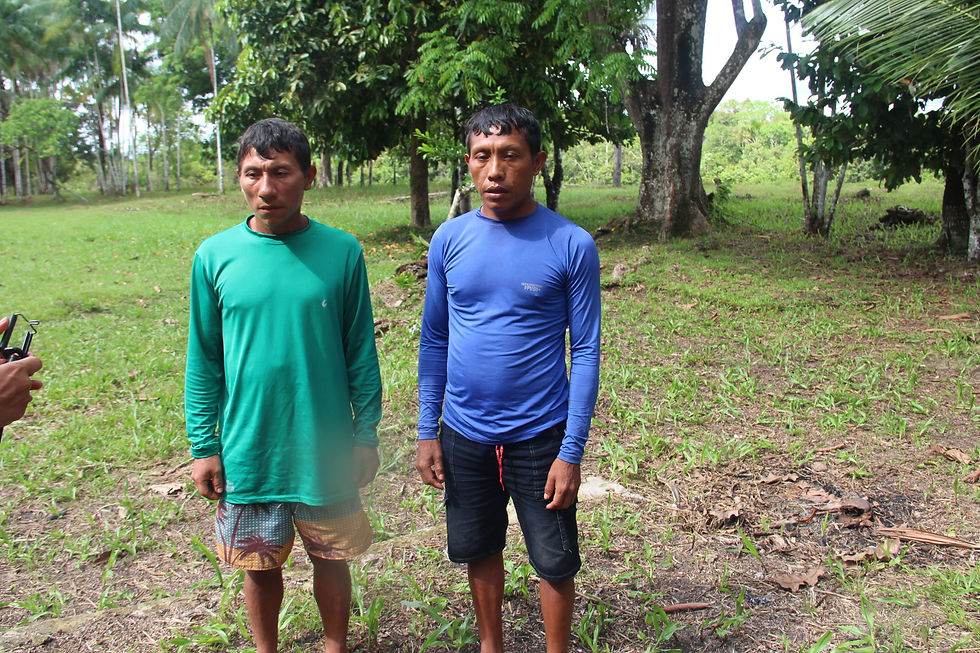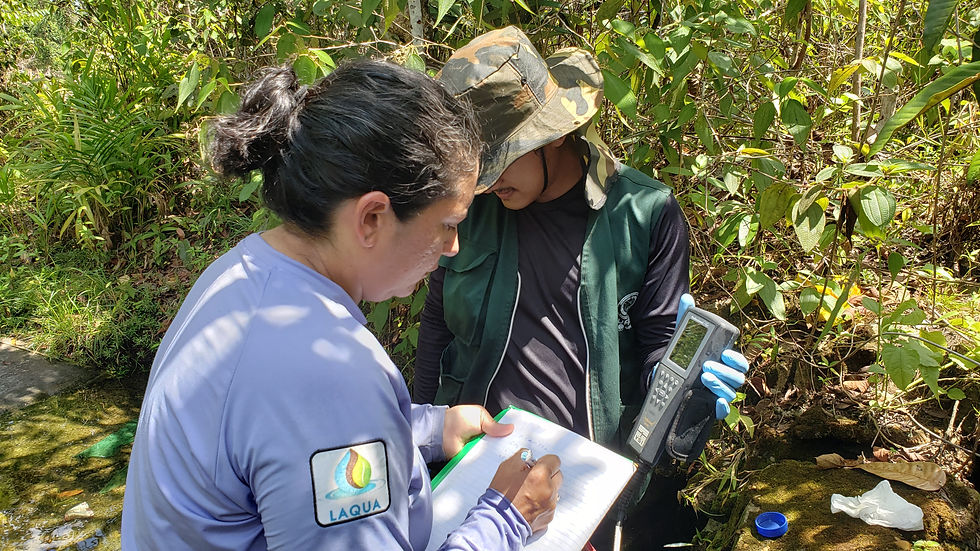Yanomami People: Violation of rights impacts on survival and dignity of life
- Secoya
- Apr 18, 2022
- 5 min read

Reports of neglect of basic aspects of the right to life among the Yanomami people are historic. With the Covid-19 pandemic, this reality was intensified, deepening the problems of lack of assistance in the areas of Health, Education and the invasion of territory by exploratory interests.
The holding of the Kurikama Assembly, which took place in October 2021 in the xapono Komixiwë, still in a pandemic context, represented the beginning of an organization of Yanomami resistance against the genocide committed by the public power by denying access to public policies aimed at indigenous peoples.
“In 2021, there was no medication all the time. We never had a regular dentist, but this time we went 1 year and 8 months without a dentist. Many children need oral health. Adults suffer all the time with toothache, cavities... there's a lot, a lot. Many young people have already lost many teeth and Sesai does not provide prostheses for young people”, says Apolinário Xamaoteri Yanomami.

Sesai is the Special Secretariat for Indigenous Health, responsible for the management and execution of public health policy in indigenous territories.
Apolinário also denounces that, in 2021, oral health care spent 30 days in the area, in the month of August, which did not cover the demand, repressed during the pandemic. He lives in the xapono Komixiwë, also known as Missão Marauiá, due to the presence of the Catholic Church. It is there that the Base Pole for the service of the Marauiá River, of the Yanomami Special Indigenous Sanitary District (DSEI) works, the management unit responsible for each territory.
“My brother lost several teeth. I was hoping to get a prosthesis for him, but when the dentist arrived, he said he didn't have that treatment. I begged him to help me get treatment because my brother couldn't smile anymore, that cute laugh, you know? Two brothers-in-law of mine who got together and helped pay. One of him is a health agent, it was all private, in the city, but now he is fine, he is smiling again,” he said.
The region of the Marauiá River, in Santa Isabel do Rio Negro (631 kilometers from Manaus), where Secoya operates, covers 21 xapono up to the border with Venezuela. Currently, indigenous people from the Demeni River, in the Barcelos region (401 kilometers from the capital of Amazonas), a municipality neighboring Santa Isabel, have also started to claim the presence of Secoya in the locality. Both make up the Middle Rio Negro region.
Within the Amazon, on the Upper Rio Negro, there is Yanomami territory also in the municipality of São Gabriel da Cachoeira. Together, these areas represent 33% of the Indigenous Land in Amazonas, which also extends to the state of Roraima.
A member of Kurikama's previous management, Soriano Yanomami Watupawe, from Xapono Balaio, vents: “You don't ask the president of Brazil and you don't get assistance? Doesn't that make you sick? Doesn't it make you angry? So, this is also for us in relation to what we ask, only we are further away and everything is more difficult”.
Between the months of July and August, a Secoya team traveled 60 xapono in three river channels – Cauaburis, Marauiá and Demeni – for 60 days to raise the main demands of the Yanomami in the context after the peak of contamination by Covid-19.

Death during Assembly
A 16-year-old Yanomami girl, seven months pregnant, died during the Kurikama Assembly, in the xapono Komixiwë, where the health care base on the Marauiá River is located. She and her son, who died shortly after birth, died awaiting removal to the Dsei headquarters in Boa Vista, Roraima state. The flight was cleared for the following day.
According to reports from the indigenous people at the site, the young woman had been in pain for at least two days in the xapono where she lived, Pukima Beira. After that period, she was taken by speedboat to the Komixiwë, where she was requested to be removed in the middle of the afternoon. The flight was cleared for the next day and she and the baby couldn't resist.
“I saw that the child had to be born. I learned this from my mother, she taught well, I studied with her. If all women knew how to do it, this wouldn't happen. I think that in another xapono there had to be another woman to help, to help”, says Luísa Yanomami, from the xapono Bicho Açu, who helped deliver the baby.
Based on the demand of the Yanomami women, Secoya began a work to identify local needs with a process of listening and sharing information and experiences about traditional practices and knowledge in monitoring the pregnancy, childbirth and postpartum period of indigenous women in the river. Marauia.
“I thought the meeting was very good for that because pregnant girls have no experience”, says Luísa, who participated in both editions.
Between 2017 and 2021, two meetings of Yanomami women were held within the indigenous territory, with support from the Oswaldo Cruz Foundation (FioCruz).
Since then, Secoya has been developing specific actions aimed at strengthening the inclusion of women in the Yanomami organizational process. In 2018, the thematic course “Yanomami women's health and informed consent” was held, with the objective of providing information on indigenous rights within the scope of the indigenous health subsystem and its actions aimed at the “Women's Health” program.
Exploitation of labor
Adilton Ampruetere Yanomami and Bebeto Ampruetere Yanomami are around 35 years old and live in the xapono Bandeira Branca, on the Padauiri River, in Barcelos. For more than 15 years, they estimate, they removed Brazil nuts from the forest, planted fields, but contact with the white man changed this routine.

“Now it's direct work and we work just to be able to eat and we never can”, explains Adilton, who works, together with approximately 20 other indigenous people, in the extraction of piaçava, a palm tree that produces fiber used in the manufacture of brooms and handicrafts.
“We don't get paid, they give what they think is worth. The buyer buys merchandise in Barcelos and brings it to pay for our work. Rice, lunch, juice, sugar, tobacco, all very expensive and they always say that's the price because they bring it from far away, but whoever cuts in the bush, walks a long way, throws water to soften it, carries it again, which is not light. , it's us”, he says.
The situation has already been the subject of a complaint to the Federal Public Ministry by Secoya. In 2014, the complaint reached the courts, an operation rescued 13 people, among them, Yanomami indigenous people. However, even today, due to the lack of inspection, the situation of exploitation of indigenous labor continues.
“We are forgotten by white men. We don't have food, we don't have health, we don't have education. Our children need to learn and they don't learn because they don't have assistance. What will become of them if they are the same as us?”, vents Adilton.
The Yanomami Indigenous Land is the largest in Brazil and was the first territory approved in the country, in 1992. In Amazonas, there are 33% of the territory. More than 28,000 indigenous people of the Yanomami and Ye’kwana people live in the entire IT, distributed in 371 villages that face invasion of the territory proportional to their size: currently, it is estimated the presence of 25,000 miners in the region.

In 2021, Secoya supported the collection of water samples from the Marauiá River and its tributaries, near and within the xapono, to measure the level of mercury. The project is an initiative of the professor at the Federal University of Amazonas (Ufam), Tereza Cristina Souza de Oliveira, assistant to the Department of Chemistry, with the support of resources from the Foundation for Research Support of the State of Amazonas (Fapeam). The search is in progress.





























Comments